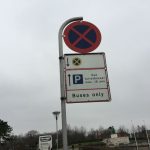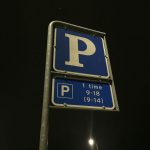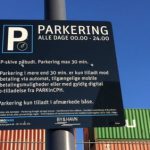How to avoid getting a parking ticket?
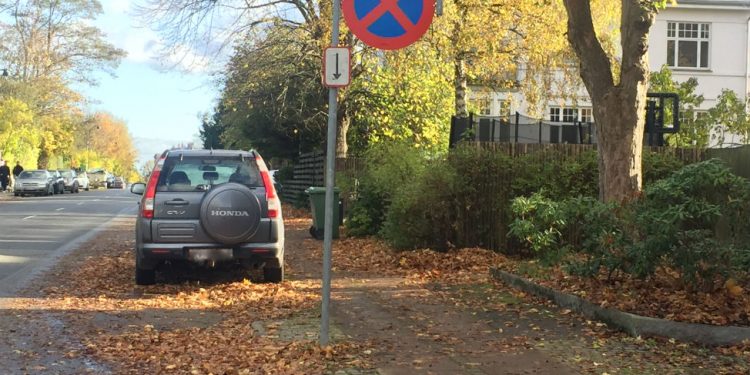
You are probably familiar with most parking signs, however, there may be local variations to be aware of to avoid that nasty surprise in your front window.
The article continues below.
By Bente D. Knudsen
Parking rules in Denmark may vary depending on your municipality: some have parking with payment only even in public streets and car parks, others have a time limit, and some have no limit nor payment.
Also, the rules may vary depending on whether you are parking in a private or public area.
In recent years the handling of private and some public car parks have been taken over by private companies, such as for instance the international company Europark. One of the important differences is the cost of the fine; private companies may charge DKK 750 whereas the municipal fine is often at DKK 510.
An ongoing issue in Danish media and within the Danish motor association, FDM, is a criticism of the private companies for being very nitty gritty and difficult to complain to concerning a fine.
The result has been a new law passed, which oblige the private car park companies to ensure that the parking rule signs are displayed at the entrance to the car park or parking area in ways which make it easy for those parking to see and understand the rules applied to that particular parking space.
In general, the same rules apply in Denmark as in other countries: you are not allowed to stop or park in a way which endangers other traffic users. You may not park in front of an exit to a house or property, you are not allowed to park in the opposite side of the road, unless it is a very small road etc.
Other rules may be new to you.
In Copenhagen, the 10 meters from an intersection rule is applied very consequently, and in order to help those parking, a small yellow triangle has been placed to mark where the 10-meter distance is.
Find the special Danish p-rules below.
New to you may be the rules regarding bicycle lanes;
It is NOT permitted to park with your wheels on the bicycle lanes. You may be confused about this as, unfortunately, many Danes disregard the rule.
Furthermore, you need to keep a distance of five meters from an exit to a bicycle path in order to enable the cyclists an adequate overview of the street they will be crossing. You may stop on the opposite side of the exit point.
In Copenhagen city, and most of the districts, public parking spaces and car parks are not free but require payment by the hour.
In Frederiksberg the first two hours are free, after this paying is required. The app Easypark features this in.
In other municipalities such as Gentofte most public parking is free.
In areas where there is free parking with a time limit, a parking disc is required to show the time of arrival. A good tip is to invest in a disc which automatically sets the time when you park, then you never have to remember to set it!
A time limit may be applied in some areas, typically 30 minutes, one hour, two hours or three hours.
Time limits mean that you must MOVE the car to another area, it is not enough to change the time on your parking disc!
Find out what the P sign says below.
What on earth does the P- sign say?
Understanding the implications of the parking sign and the text may also be a challenge.
Public parking signs are all blue with white text. Those in private car parks are black with white text.
If there is just a sign with a big P, this means, there are no time restrictions. The general parking rules of course still apply. If on the other hand there is text underneath the P, you need to know what the text means.
In public car parks and roads, the signs often have several lines, often up to three lines.
The first line means weekdays from Monday to Friday, here the number written in black or white refers to the time when parking is permitted during workdays, the second line means Saturday with the hours written in blue inside a bracket, the third line means Sunday and bank holidays and the hours will be in red.
If there are only two lines, this means that on Sundays and bank holidays there are no time limits to parking.
The arrows are important to understand
Do you know how to interpret those nice little arrows? An easy rule is to image that the P -sign is placed on the ground, the direction in which the arrow is pointing means it is applied in that direction of the road and only that direction.
Here the international sign for no parking and no stopping, the arrow pointing towards you means from the sign and towards you. Underneath is a blue P-sign with an arrow pointing away from you, here you need to read the text as it says buses only for 15 min. ( As this is near a tourist sight they did add an English text to help car owners!).
Find a few more examples of signs below.
Find here a few examples which may be new to you:
This P means that you can park here, however, the time limit of one hour applies to the two lines: the first line is Monday to Friday from 9 – 18 (parking only allowed one hour during this time) and on Saturdays one hour (the time with brackets around) from 9 to 14. So on weekdays after 18.00 you can park unlimited until the next morning at 9:00, and on Saturdays after 14.00 you can park as long as you want to.
Sundays there are no time limits.
This is a private car park, it is on a black background with a white P. Notice the time limit: it applies 24 hours (alle dage 00.00-24.00)but does not mean you can park for free. The text is long in Danish and important to understand. It says: Parkering max. 30 minutter, parking is free with the parking disc for 30 minutes only. Underneath the text explains that parking for longer than 30 minutes needs to be paid!
The article continues below.
 Can you see the small yellow triangle? This indicates the 10 meter point from the intersection.
Can you see the small yellow triangle? This indicates the 10 meter point from the intersection.
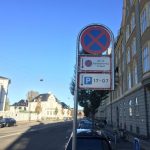 This sign is tricky! No parking or stopping for more than 3 minutes on the road. After the sign there is the sign for disabled parking.
This sign is tricky! No parking or stopping for more than 3 minutes on the road. After the sign there is the sign for disabled parking.
Underneath first sign there is again a no parking or stopping sign with an arrow pointing in front of the sign saying that the unloading of goods is permitted between 07:00 and 17:00.
The last sign says that on weekdays you can park from 17:00 until 07:00, this is the line P 17-07, and as there is only one line, this means you can park unlimited on Saturdays and Sundays in front of the sign ( the arrow points towards you)!


